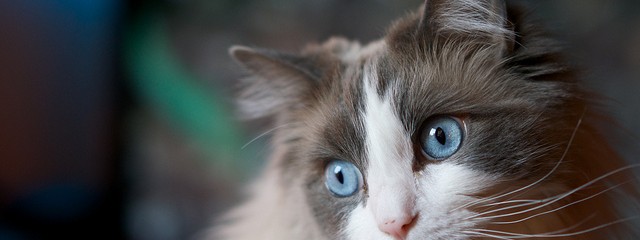5 Pet photography tips

What do pet ownership and photography have in common? Both call for special skills that are honed over time and involve being comfortable with not having total control over a situation. When you put them together, what you get is an endeavor that requires great timing. But in order to put yourself in the position to capture that great moment with your pet, make sure you have the basics down. These five tips will set you on your way.
- Turn off the flash. You know how it feels to be momentarily blinded by a flashbulb. It’s actually worse for pets. It can make them afraid of the situation, which can lead them to running for cover. Unless your photo shoot’s theme is “hide and seek,” this can really put an end to your session before it even starts. What’s more, flash isn’t just harsh on the eyes, it hurts the composition of the photo, washing out important details in your pet’s fur, feathers, or scales, which rarely makes for good pictures. Instead, use as much natural light as possible.
- Get the right setting. Opt for a setting where there is a good amount of natural light that you can use to illuminate and backlight your pet. At the same time, you should balance this need with an environment in which your pet is comfortable. If he or she is not used to going outside, the photo shoot might not be the time or place to introduce them to the great outdoors. The more comfortable your pet is during the shoot, the better your shots will be, so plan accordingly.
- Capture the action. Action shots look more natural than posed shots, particularly if you have a high-energy dog or cat. To help ensure your action photos come out crystal clear and capture the best moments, set your camera to sports mode (or the equivalent) and enable continuous shooting.
- Capture your pet’s essence. This can be hard to figure out at first and may require some experimentation, but your photo shoot will be more satisfying if you attempt to capture your pet’s real personality. Perhaps it’s in the way they play or in the way they look when sleeping. Try to catch your pet doing something quintessentially them, be it gnawing on a favorite toy or spinning on a hamster wheel. This will bring uniqueness to your set of photos.
- The eyes have it. You may not always notice it during your day-to-day, but your pet can tell you quite a bit based on his or her facial expression, especially the eyes. So naturally, keep a sharp focus on your pet’s eyes. These shots, especially those that are taken as close-ups, can be highly evocative in ways you might not expect. The eyes are the window to the soul, after all!
It may not always be easy, but pet photography can be highly rewarding. Test out these tips and experiment with others to find the best way to photograph your pet!
9 Pet Photography Tips [Digital Photography School]
Tips From a Pro: Gary Parker’s Dog Photography [Popular Photography]
Pet Photography Tips [Exposure Guide]